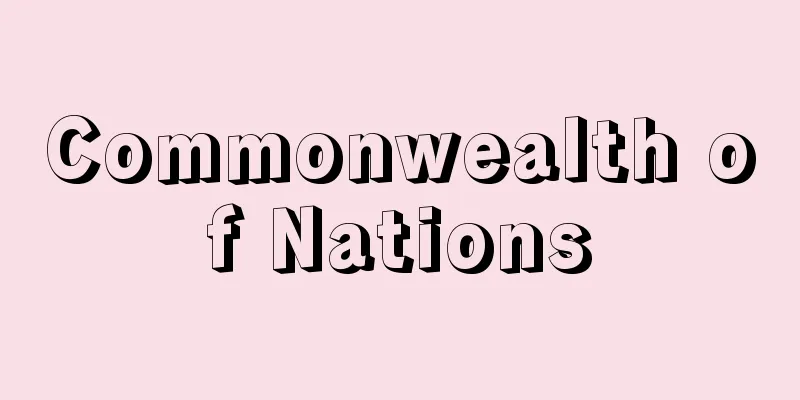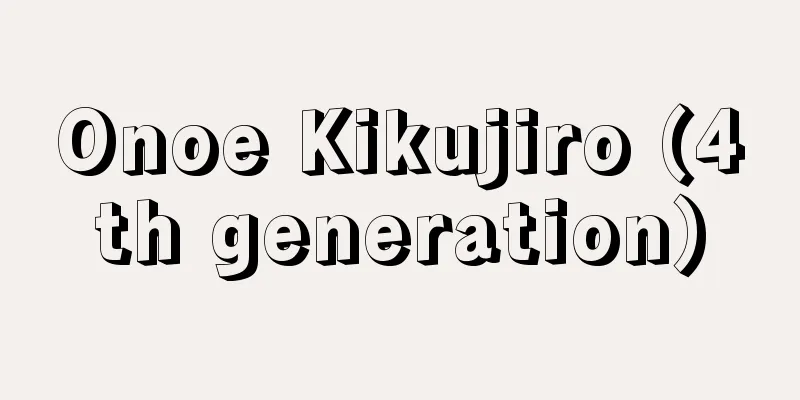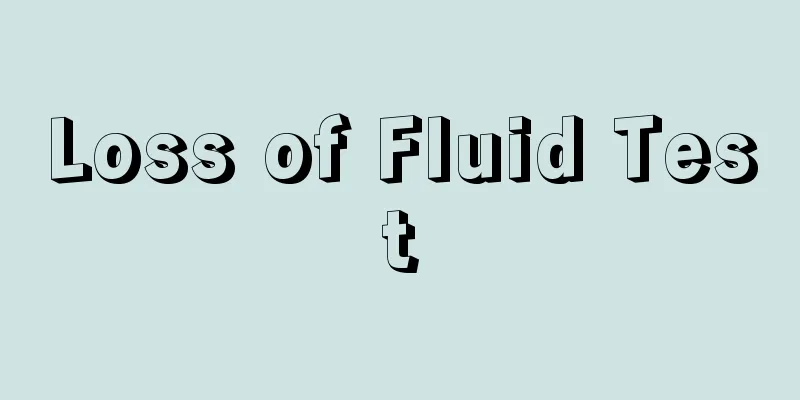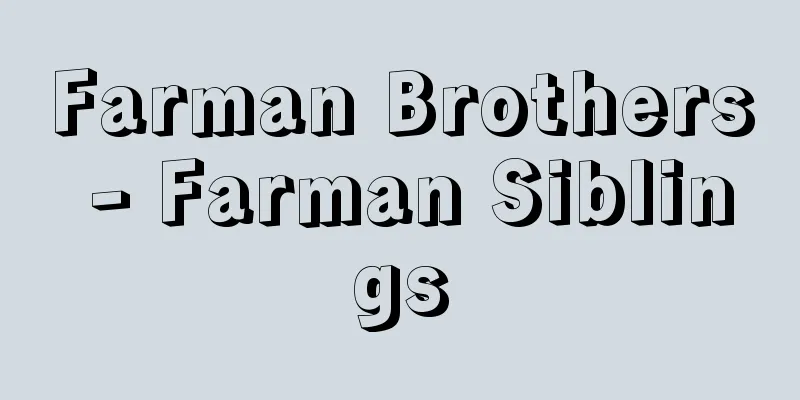Urban Agriculture
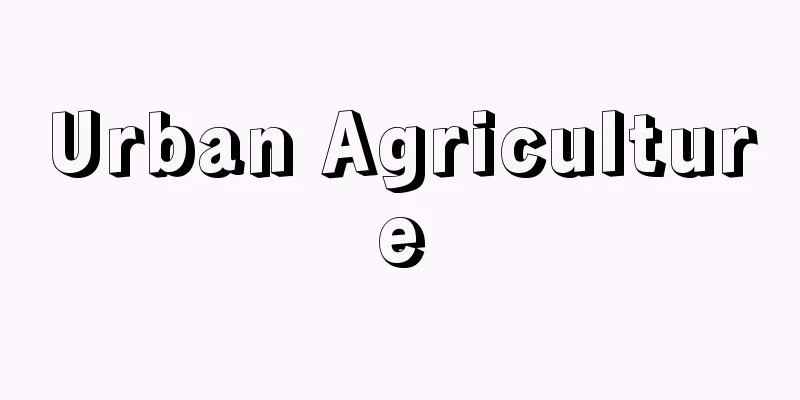
|
Urban agriculture is a type of agriculture that is isolated and dispersed within the expanding urban areas of cities, and is distinct from suburban agriculture, which is practiced on the outskirts of cities. In Japan, since the period of high economic growth, the rapid development of industry and services in urbanized areas has led to non-agricultural land demand and high land prices, and large-scale, disorderly urban development has progressed in search of cheap land, destroying the harmonious relationship between cities and rural areas, and leaving already established suburban agricultural areas fragmented within urbanized areas. Urban agriculture, which is practiced in such an isolated state in urban areas, has faced more restrictions in terms of management and farm work than suburban agriculture did. Specifically, the air needed for agriculture has become polluted by soot and toxic gases emitted from factories, and sunlight and ventilation have become poor due to nearby buildings. Water for irrigation has become polluted, and drainage channels have become unable to function properly due to the dumping of garbage and other materials into fields. The use of pesticides, fertilizers, farm equipment, and facilities has been restricted, making farm roads difficult to use and creating obstacles to agricultural work. Furthermore, farmland and facilities have been damaged, making what should have been a convenient location an obstacle instead. Also, the cost of investment in facilities to prevent soil and water pollution (agricultural pollution) caused by the excessive use of chemical fertilizers, pesticides, and hormones, and the bad odors and water pollution caused by raising livestock and poultry and their excrement (livestock pollution) have become a large burden. Urban agriculture is a highly intensive form of agricultural management. It thoroughly pursues the advantageous conditions of being located within urban areas, making land-saving and/or capital-intensive facility investments, utilizing advanced sales strategies, and thoroughly operating highly productive, highly profitable agriculture that makes full use of the skills of managers. It is also required to be careful not to cause agricultural pollution, and to invest in pollution prevention and removal. For these reasons, horticulture, such as vegetables, flowers, and fruit trees, is currently the focus of management. On the other hand, the disorderly and rapid expansion of cities has brought about the accumulation of various types of problems. At the same time, the role of agriculture in preventing overcrowding and pollution in such cities, effectively utilizing garbage and leftovers from cities through recycling, providing pleasant scenery and green spaces, and providing spaces for health, recreation, and relaxation has come to be noticed. Examples of this are rental farms, community gardens, and tourist agriculture. Urban agriculture has also come to be recognized as a disaster prevention space and as reserve land for future urban facilities. As urban residents appreciate the public role of urban agriculture, and as agriculture's original functions of producing fresh and safe agricultural products and providing local supplies (including direct sales and joint sales) are reevaluated, collaboration between urban agriculture and urban residents, workplaces, consumer cooperatives, agricultural cooperatives, etc. has come to be emphasized. [Hiroyuki Nishimura] In order to use land in urban areas in a planned manner, the City Planning Act came into force in Japan in 1969, dividing land into "urbanization areas" - urban districts and areas that should be urbanized preferentially and systematically - and "urbanization control areas" where urbanization is to be restricted. In urbanization areas in the three major metropolitan areas (Tokyo, Chubu, and Kinki), deemed taxation (so-called residential land taxation) was applied to farmland to encourage the supply of housing land. On the other hand, with consideration given to public benefits such as disaster prevention and environmental conservation, farmland within urbanization areas that met certain conditions was given tax reductions and exemptions under the Productive Green Space Act that came into force in 1974. In response to the soaring land prices during the bubble economy, the revised Productive Green Space Act was enacted in 1992 to encourage the supply of housing land in urban areas, dividing farmland within urbanized areas into "residential farmland" that will be supplied as housing land, and "productive green space" that will continue to be used for farming for 30 years. Residential farmland can be used as housing land, but is subject to taxation at the same rate as residential land. On the other hand, productive green space that supports urban agriculture cannot be used for housing development, but is eligible for preferential treatment such as reductions in fixed asset tax and deferrals of inheritance tax payments. With the introduction of this productive green space system, the amount of farmland within urbanized areas in the three major metropolitan areas was 46,000 hectares in 1993, but by 2016, this had decreased to 25,000 hectares. Of this, productive green space has remained almost stable at 13,000 hectares, but farmland converted into residential land has progressed and decreased from approximately 30,000 hectares to 12,000 hectares. However, in 2022, 30 years after the system was launched, approximately 80% of productive green spaces will lose preferential treatment such as deferred inheritance tax payments, and due to a lack of successors to continue farming, they may be converted into residential land all at once (the 2022 productive green space problem). For this reason, the revised Productive Green Space Act was enacted in 2017, and measures were taken to ease the area requirement for productive green spaces, such as lowering the area requirement from 500 square meters to 300 square meters. In addition, in 2018, tax reforms were decided to allow preferential inheritance tax treatment even in cases where productive green spaces are leased to companies or non-profit organizations (NPOs). [Takeshi Yano August 21, 2018] "Urban Agriculture - Development and Strategy" by Kashiro Kobe (1975, Meibunshobo) " "Issues Surrounding Urbanization and Agriculture" edited by the Urban Suburban Agriculture Research Group (1977, Agriculture and Forestry Statistics Association)" "Modern Urban Agriculture Theory" edited by Kiyohiko Minami et al. (1978, Tomin Association) " "Transformation of Rural Areas in Urbanized Regions" edited by Hiroyuki Nishimura (1990, Taga Publishing) [Reference items] | | |Source: Shogakukan Encyclopedia Nipponica About Encyclopedia Nipponica Information | Legend |
|
都市の市街地が拡大する地域内に孤立・分散して、点在化した状態で営まれている形態の農業のことを、都市の周辺で営まれている近郊農業とはとくに区別して、都市農業という。日本においては高度経済成長期以降、都市化地域では工業やサービス業の急速な発展に伴い、非農業的な土地需要と高地価が引き起こされ、安い土地を求めて大規模で無秩序な都市開発が進み、調和のとれた都市と農村の関係を破壊し、すでに成立していた近郊農業地帯が都市化地域の中に分断された形で取り残されるようになった。このような都市域に孤立した状態で営まれるようになった都市農業は、経営面、農作業面で近郊農業が当面してきた以上の制約を受けることになった。具体的には、農業が必要とする大気が工場から排出される煤煙(ばいえん)や有毒ガスなどで汚染され、付近の建物のために日照や通気が不良となった。灌漑(かんがい)用の水が汚染され、ごみなどの圃場(ほじょう)への投げ捨てによって排水路が十分な機能を発揮できなくなった。農薬、肥料、農機具、施設などの利用が制約され、農道が使いにくくなって、農作業をするうえで障害が起きてきた。さらに農地や施設が破損されたりして、便利なはずの立地条件がかえって妨げになり、また、化学肥料、農薬、ホルモン剤の過度の投入によって生ずる土や水の汚染(農業公害)や、家畜、家禽(かきん)などの飼育と糞尿(ふんにょう)がもたらす悪臭や水の汚濁(畜産公害)などを防止するための施設投資への費用負担が大きくなった。 都市農業は高度に集約的な農業経営形態をとる。都市域内に存在するという有利な条件を徹底的に追求するという、土地節約的あるいはまた資本集約的な施設投資を行い、高度の販売戦略を駆使して、経営者としての能力を生かした高生産性・高収益農業を徹底して営む。また、農業公害が発生しないよう留意したり、公害防止・除去のための投資をすることが求められる。これらのことから、現在では野菜、花、果樹などの園芸が経営の中心となっている。 一方、都市の無秩序で急激な膨張はさまざまな形の弊害の集積をもたらしてきた。それとともに、このような都市でみられる過密・公害を防止し、都市から排出されるごみや残飯などをリサイクリングによって有効に利用し、快適な景観・緑地用役を与え、保健・レクリエーション・憩いの空間を供給する農業の役割が注目されるようになってきた。貸し農園、市民農園、観光農業などがそれである。また防災空間として、将来の都市施設用の予備地としての効用も認められるようになった。このような都市農業の公益的役割が都市住民によって評価され、しかも農業の本来的な機能である生鮮で安全な農産物の生産と地場供給機能(直売、共同販売なども含む)が見直されるにつれて、都市農業と都市住民、職場、生活協同組合、農業協同組合などとの連携活動が重視されるようになってきている。 [西村博行] 都市部の土地を計画的に利用するため、日本では1969年(昭和44)に都市計画法が施行され、市街地および優先的・計画的に市街化すべき区域をさす「市街化区域」と、市街化を抑制する「市街化調整区域」に区分した。三大都市圏(首都圏、中部圏、近畿圏)の市街化区域では宅地供給を促すため、農地にみなし課税(いわゆる宅地並み課税)を適用した。一方、防災や環境保全などの公益性にも配慮し、市街化区域内で一定条件を満たす農地は1974年施行の生産緑地法に基づき税の減免が行われた。 バブル経済期の地価高騰を受け、都市部での宅地供給を促すため、1992年(平成4)に改正生産緑地法が施行され、市街化区域内の農地は、宅地供給する「宅地化農地」と、30年間営農し続ける「生産緑地」に分けられた。宅地化農地は宅地として利用できるが、宅地並み課税を受ける。一方、都市農業を支える生産緑地は、宅地造成できないものの、固定資産税の減免や相続税の支払い猶予などの優遇措置を受けられる。この生産緑地制度の導入で、1993年に三大都市圏の市街化区域内農地は4万6000ヘクタールあったが、2016年(平成28)には2万5000ヘクタールに減少した。このうち生産緑地は1万3000ヘクタールとほぼ横ばいであるが、宅地化農地は宅地化が進み、約3万ヘクタールから1万2000ヘクタールに減った。 しかし生産緑地の約8割は、制度発足から30年が経つ2022年に相続税の支払い猶予などの優遇措置が切れ、農業を続ける後継者不足もあって、一斉に宅地化する可能性がある(生産緑地の2022年問題)。このため2017年には改正生産緑地法が施行され、生産緑地の面積要件を500平方メートルから300平方メートルにするなどの緩和策がとられた。また2018年には、生産緑地を企業や非営利団体(NPO)に貸与した場合でも、相続税の優遇措置が受けられる税制改正が決まった。 [矢野 武 2018年8月21日] 『神戸賀寿朗著『都市農業――展開と戦略』(1975・明文書房)』▽『都市近郊農業研究会編『都市化と農業をめぐる課題』(1977・農林統計協会)』▽『南清彦他編『現代都市農業論』(1978・富民協会)』▽『西村博行編著『都市化地域における農村の変貌』(1990・多賀出版)』 [参照項目] | | |出典 小学館 日本大百科全書(ニッポニカ)日本大百科全書(ニッポニカ)について 情報 | 凡例 |
>>: Toshi no Ichi (year-end market) - Toshi no Ichi
Recommend
Anostomus anostomus (English spelling) Anostomusanostomus
...It prefers live bait and is easy to breed. (7)...
Floating zenith telescope
When installing a zenith telescope for precise obs...
oneiroider Zustand (English spelling) oneiroider Zustand
...In Japan, the following three different states...
The Japan Foundation
An independent administrative institution establis...
Single sculls (English spelling)
...There are no regulations on the material or si...
blind test
...The deliciousness of soup depends on the harmo...
Literary Front - Bungei Sensen
A literary magazine. It was first published as a ...
Fixed date payment - fixed date payment
…That is, entries of dates before the date of iss...
Tinplate - Tinplate (English spelling)
A thin steel plate plated with tin. The kanji cha...
Occitania - Okushitania
…He also restored the former Archbishopric of Tar...
Deception - Kimou
〘 noun 〙 (also "gimou") A fraudulent act...
Kuniichi
In the Middle Ages, this term refers to a market o...
Rhyme - Inhaku
...Also, only Jing and Chou wear makeup, and the ...
Establishment movement - Kakuritsuundo
...The fundamental difference between this moveme...
Sepia latimanus (English spelling) Sepialatimanus
…Squid [Takashi Okutani]. . . *Some of the termin...
